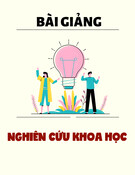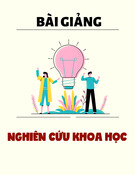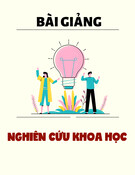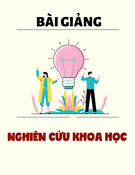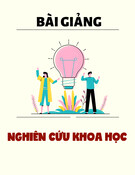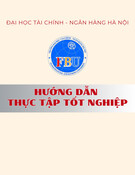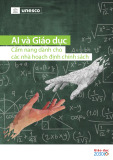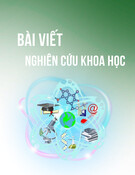
_____________________________________________________________________________________________________
*Corresponding author: E-mail: kayceelagua09@gmail.com;
Cite as: Lagua, Kaycee T. 2025. “Experiential Learning Strategy: Its Effect on Science Performance of Grade VI Pupils at
Ripang Elementary School”. Journal of Education, Society and Behavioural Science 38 (4):24-30.
https://doi.org/10.9734/jesbs/2025/v38i41397.
Journal of Education, Society and Behavioural Science
Volume 38, Issue 4, Page 24-30, 2025; Article no.JESBS.137110
ISSN: 2456-981X
(Past name: British Journal of Education, Society & Behavioural Science,
Past ISSN: 2278-0998)
Experiential Learning Strategy:
Its Effect on Science
Performance of Grade VI Pupils
at Ripang Elementary School
Kaycee T. Lagua a*
a Apayao State College, Malama, Conner, Apayao -3807, Philippines.
Author’s contribution
The sole author designed, analysed, inteprted and prepared the manuscript.
Article Information
DOI: https://doi.org/10.9734/jesbs/2025/v38i41397
Open Peer Review History:
This journal follows the Advanced Open Peer Review policy. Identity of the Reviewers, Editor(s) and additional Reviewers, peer
review comments, different versions of the manuscript, comments of the editors, etc are available here:
https://pr.sdiarticle5.com/review-history/137110
Received: 23/03/2025
Accepted: 28/05/2025
Published: 31/05/2025
ABSTRACT
This study aimed to determine the effect of the Experiential Learning Strategy (ELS) on the science
performance of Grade 6 pupils at Ripang Elementary School during the School Year 2024–2025.
Grounded in the K to 12 learner-centered and inquiry-based science curricula, the study addressed
the ongoing challenge of poor science achievement among Filipino students, as reflected in the
2022 PISA results. Specifically, the study sought to answer the following research questions: (1)
What is the pre-test performance in science of the control and experimental groups before the
implementation of ELS? (2) What is the post-test performance of these groups after the
intervention? (3) Is there a significant difference in post-test performance between the groups when
gender is considered? Three null hypotheses were tested: (1) There is no significant difference in
the pre-test performance between groups; (2) There is no significant difference in the post-test
performance between the groups; and (3) There is no significant difference in the post-test
performance when analyzed by gender. The study employed a two-group pre-test and post-test
Short Research Article

Lagua; J. Educ. Soc. Behav. Sci., vol. 38, no. 4, pp. 24-30, 2025; Article no.JESBS.137110
25
experimental design. The participants were 26 Grade 6 pupils, divided equally into control and
experimental groups through total enumeration. The control group received traditional instruction,
while the experimental group was taught using ELS. A standardized 40-item multiple-choice test,
aligned with PROJECT SMART for Science 6, was used to measure performance before and after
the intervention. The results revealed that both groups performed poorly in the pre-test. However, in
the post-test, the experimental group achieved a significantly higher mean score (M=32, "Good")
compared to the control group (M=30, "Fair"). A t-test showed a statistically significant difference in
favor of the experimental group (p = 0.040), leading to the rejection of the null hypothesis. Gender-
based analysis showed that ELS improved science performance for both male and female students,
suggesting no gender bias in its effectiveness. In conclusion, the Experiential Learning Strategy
significantly enhanced the science performance of Grade 6 pupils at Ripang Elementary School. It
promoted active engagement, deeper understanding, and equitable academic outcomes. It is
therefore recommended that science teachers integrate experiential learning approaches in their
instruction to foster more meaningful, inclusive, and effective learning experiences in science
education.
Keywords: Experiential learning strategy; performance; science; elementary school.
1. INTRODUCTION
Science learning is a vehicle for students to learn
about themselves and their environment, as well
as the prospect of further development when
applied to everyday life. The K to 12 science
curriculum is learner-centered and inquiry-based,
emphasizing evidence in constructing
explanations. Concepts and skills in Life
Sciences, Physics, Chemistry, and Earth
Sciences are presented with increasing levels of
complexity from one grade level to another in a
spiral progression, thus paving the way to a
deeper understanding of core concepts (Orbe, J.
R., Espinosa, A. A., & Datukan, J. T., 2018). The
K-12 curriculum paved the way for developing
innovative, reflective, collaborative, and critical
thinking skills. Teachers opted to adapt different
teaching strategies to cater to the diverse needs
of the learners (Department of Education, 2016).
One of the strategies that is widely used by
teachers in teaching science is the experiential
learning approach. Experiential learning is an
educational approach that focuses on learning
through real experiences and direct interaction
with the learning environment (Thi Thu, D.H.N.,
Chung, V. T., & Thi Nam, B., 2024; Miettinen,
2000). Furthermore, the experiential learning
approach involves students in a complex
understanding rather than surface learning and
enables students to transfer knowledge better
(Kasim, A.-., Shimar, H. & Bakil, H. A., 2024).
Moreover, activities and environments
associated with experiential learning, such as
experiments, are primary examples of how
experiential learning acts as a bridge to
developing the skills of the students and
encouraging them to actively engage in the
subject matter (Tanner, S., Green, K., & Burns,
S. 2012; Alvi & Gillies, 2021; Hanratty & Taggart,
2005; Mutmainah R., Rukayah, &Indriayu, M.
2019).
In the Program for International Student
Assessment (PISA) results in 2022, the
Philippines was ranked 77th among 81 PISA-
performing countries worldwide. The Philippines
had the lowest mean score in science (356/600).
Insufficient access to quality science education
and resources is a major factor contributing to
students’ low academic achievements
(Magsambol, 2024). Moreover, it is reported that
not all schools in the Philippines have access to
adequate science materials, including laboratory
equipment and up-to-date textbooks, which
hinders students' practical understanding of
scientific concepts (Organisation for Economic
Co-operation and Development [OECD], 2023).
This lack of resources leads to students being
less motivated in class, resulting in low
adaptability and comprehension. As a result,
students fail to learn scientific phenomena on
certain topics and are unable to connect theories
and knowledge from the classroom to real-world
situations.
Experiential learning emphasizes cognitive,
affective, and psychomotor aspects
(Susiloningsih, E., Sumantri, M. S., &Marini, A.,
2023). This approach provides students with
high-impact learning experiences through several
pedagogical methods (Vecchiarini, M., Muldoon,
J., Smith, D., &Boling, R., 2023). Effective
experiential learning opportunities have many
advantages: they are learner-centered and

Lagua; J. Educ. Soc. Behav. Sci., vol. 38, no. 4, pp. 24-30, 2025; Article no.JESBS.137110
26
student-directed, structured with an emphasis on
problem-solving, discovery, and inquiry, and
focus on practical applications of course content.
These strategies promote a holistic
understanding of a discipline, perception-based
learning, and a heuristic process—learning about
learning (Anthony, J., Ewing, M., Jaynes, J., &
Perkus, G., 1990). With these benefits, the use of
experiential learning approaches can improve the
quality of education, and it is recommended that
such approaches be applied, especially in
science learning.
2. STATEMENT OF THE PROBLEM
The study aimed to determine the effect of the
Experiential Learning Strategy (ELS) on the
science performance of Grade 6 pupils of Ripang
Elementary School. This initiative aligns with the
Philippine government's mandate through the
Department of Education (DepEd) to implement
a learner-centered and inquiry-based curriculum
under the K to 12 Basic Education Program. The
government plays a crucial role in promoting
innovative teaching strategies, such as
experiential learning, to meet the evolving
educational needs of students and to raise
national academic standards, particularly in
science and mathematics, as highlighted in
global assessments like PISA. Despite these
curriculum reforms, many teachers still rely
heavily on traditional, lecture-based instruction.
When educators do not adopt experiential
learning strategies, students are deprived of
active engagement, hands-on experiences, and
real-world applications of scientific concepts.
This often results in surface-level understanding,
low interest, and poor retention of knowledge, all
of which contribute to weak academic
performance. Before this study, the performance
of pupils in science at Ripang Elementary School
was notably poor, as evidenced by low mean
scores in standardized assessments. This
underperformance reflects broader national
trends, such as the Philippines’ low ranking in the
2022 PISA results, where it placed 77th out of 81
countries in science. Such alarming outcomes
underscore the urgent need to explore more
effective instructional approaches, such as the
Experiential Learning Strategy, to enhance
student achievement and foster deeper
understanding in science education.
The primary objective of this study was to
determine the effect of the Experiential Learning
Strategy (ELS) on the science performance of
Grade 6 pupils at Ripang Elementary School.
Specifically, sought to answer the following
questions:
1. What is the pre-test performance in
Science of the control and experimental
groups before the implementation of the
Experiential Learning Strategy (ELS)?
2. What is the post-test performance in
Science of the control and experimental
groups after the implementation of the
Experiential Learning Strategy (ELS)?
3. Is there a significant difference in the post-
test performance in Science between the
control and experimental groups when
gender is considered as a variable?
2.1. Hypothesis
1. There is no significant difference in the
pre-test performance in science before the
use of the Experiential Learning Strategy
(ELS).
2. There is no significant difference in the
post-test performance in science between
the control group and the experimental
group after the use of the Experiential
Learning Strategy (ELS).
3. There is no significant difference in the
post-test performance in science between
the control and experimental groups.
3. METHODOLOGY
3.1 Research Design
The study utilized a two-group pre-test and post-
test experimental design to measure the effect of
the Experiential Learning Strategy (ELS) on the
science achievement of Grade 6 pupils. In this
design, the experimental group received
instruction through ELS, while the control group
was taught using traditional methods. This
design was selected because it allows for the
comparison of learning gains between groups
while controlling for initial differences in
performance. According to Creswell (2014), the
pre-test–post-test control group design is
effective for determining cause-and-effect
relationships by assessing the impact of an
intervention over time. Furthermore, Campbell
and Stanley (1963) assert that this design
strengthens internal validity by enabling

Lagua; J. Educ. Soc. Behav. Sci., vol. 38, no. 4, pp. 24-30, 2025; Article no.JESBS.137110
27
researchers to attribute changes in the
dependent variable (student achievement) to the
independent variable (teaching strategy), rather
than to external factors. Additionally, gender was
considered a classification variable. The
performances of male and female students
were analyzed separately to determine
whether gender influenced the effectiveness of
the Experiential Learning Strategy. This
provided deeper insight into how different
groups of learners responded to the
intervention.
3.2 Locale of the Study
The study was conducted at Ripang Elementary
School (RES), located in Purok 3, Ripang,
Conner, Apayao, during the School Year 2024–
2025. RES is one of the barangay schools
in the Northern Conner District Division of
Apayao.
3.3 Participants of the Study
The participants were the Grade 6 pupils of
Ripang Elementary School, composed of 18
males and 8 females, a total of 26 learners. The
class was divided into two groups: 13 pupils in
the control group and 13 pupils in the
experimental group. Total enumeration was
employed. Gender distribution was recorded to
facilitate gender-based analysis of results.
3.4 Research Instrument
The primary instrument used in the study was a
40-item multiple-choice test prescribed by the
Department of Education–CAR. Both the pre-test
and post-test were sourced from PROJECT
SMART (Standardized and Meaningful
Assessment Result-Based Teaching) for
Science 6.
3.5 Data Gathering Procedure
Permission to conduct the study was obtained
from the Public Schools District Supervisor
(PSDS) of Northern Conner District and the
School Head of Ripang Elementary School.
Upon approval, the researcher utilized her
assigned time in the Science class to implement
the study. The pre-test was administered on the
first day of the scheduled week aligned with the
chosen learning competency. Students were
divided into experimental and control groups with
matched abilities based on their first and second
quarter academic performance. Learners were
randomly assigned to groups, with careful
consideration given to maintaining a balance in
ability levels between the two groups. The control
group was taught using traditional methods,
while the experimental group received instruction
using the ELS approach. The control group had
classes from 1:30 p.m. to 2:20 p.m., while the
experimental group was taught from 2:21 p.m. to
3:11 p.m. The intervention lasted for eight
weeks, with sessions conducted every
Tuesday and Thursday. After the intervention
period, a post-test was administered to both
groups.
3.6 Statistical Analysis
The mean and standard deviation were
computed for the pre-test and post-test scores of
both the control and experimental groups. A t-
test was used to determine whether there was a
significant difference in science performance
before and after the intervention. Additionally,
student performance was disaggregated by
gender to analyze differences in outcomes
between male and female learners. This enabled
the researcher to examine whether gender
influenced the effectiveness of the Experiential
Learning Strategy.
4. RESULT AND DISCUSSION
4.1 Pre-test Performance of Pupils in
Science before the use of
Experiential Learning Strategy (ELS)
The pre-test results show that both the control
and experimental groups performed poorly in
science before the implementation of the
Experiential Learning Strategy (ELS). The
control group had a slightly higher mean
score of 22 compared to 20 for the experimental
group, based on a 40-item multiple-choice test.
The relatively high standard deviations
indicate wide variation in scores among pupils in
both groups. Overall, the low baseline
performance justifies the need for an intervention
to improve science achievement. When
disaggregated by gender, the pre-test scores
revealed similar trends, with both male and
female pupils in the control and experimental
groups demonstrating poor performance. This
indicates that, before the intervention, there was
no significant gender difference in science
achievement.

Lagua; J. Educ. Soc. Behav. Sci., vol. 38, no. 4, pp. 24-30, 2025; Article no.JESBS.137110
28
Table 1. Mean and Standard deviation of performance of pupils in science in the pretest
Table 2. Mean and standard deviation of performance of pupils in science during the post-test
Groupings
Mean
Descriptive Scale
Standard Deviation
Control Group
30
Fair
2.18
Experimental Group
32
Good
3.46
Table 3. Test of significant difference in the post-test performance in science between the
control and experimental group.
Grouping
Mean
DS
Std.
Deviation
t
df
p
Decision at
α= 0.05
Control
30
Fair
2.18
2.167
24
0.040
Reject Ho
Experimental
32
Good
3.86
4.2 Post-test Performance of Pupils in
Science after the use of Experiential
Learning Strategy (ELS)
The post-test results indicate that the
experimental group, which received instruction
through the Experiential Learning Strategy,
performed better than the control group, with
mean scores of 32 and 30, respectively, out of
40. This improvement is also reflected in the
descriptive scale, where the experimental group
achieved a "Good" rating while the control group
earned only a "Fair" rating. These findings align
with Jannah and Shofiyah (2024), who noted that
ELS enhances pupils' science performance by
engaging them in hands-on experiments,
collaborative discussions, and presentations. The
strategy encourages deeper understanding
through active exploration and practical
application of concepts such as Friction, Gravity,
Energy, and Simple Machines. Disaggregated
data by gender showed that both male and
female pupils in the experimental group improved
significantly compared to their counterparts in the
control group. This suggests that the ELS
approach is effective regardless of
gender, promoting better learning outcomes for
all pupils.
4.3 Significant Difference in the Post-test
Performance in Science between the
Control and Experimental Group
As shown in Table 3, the t-test results
reveal a p-value of 0.040, which is less than the
significance level of 0.05. Therefore, the null
hypothesis is rejected, indicating a
statistically significant difference in post-test
performance between the control and
experimental groups. Pupils taught using the
Experiential Learning Strategy performed
significantly better in science than those
taught using traditional methods. When the
analysis was conducted by gender, the
difference in performance remained significant
for both male and female pupils, confirming that
ELS positively impacts science achievement
across genders.
5. CONCLUSION
The grade VI pupils who were exposed to the
experiential learning strategy (ELS)
demonstrated significantly better performance in
science compared to those who were not. These
results indicate that ELS is effective in enhancing
learning outcomes, as reflected in the improved
academic performance of the experimental group
during the third quarter. The topics covered
included friction, gravity, types of energy, energy
transformation, and simple machines.
Furthermore, when performance was analyzed
by gender, both male and female pupils in the
experimental group showed marked
improvement. This indicates that the ELS
approach benefits learners regardless of gender,
suggesting that experiential learning provides
an inclusive, engaging, and equitable
environment that supports academic growth for
all students.
Groupings
Mean
Descriptive Scale
Standard Deviation
Control Group
22
Poor
6.39
Experimental Group
20
Poor
4.43







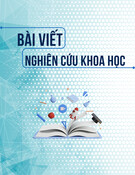
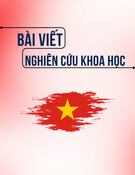
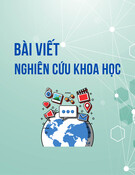

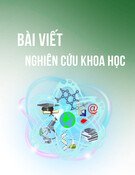

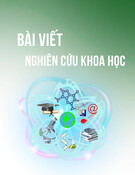

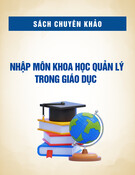
![Định hướng giáo dục STEM trong trường trung học: Tài liệu [chuẩn/mới nhất]](https://cdn.tailieu.vn/images/document/thumbnail/2025/20251124/dbui65015@gmail.com/135x160/25561764038505.jpg)
